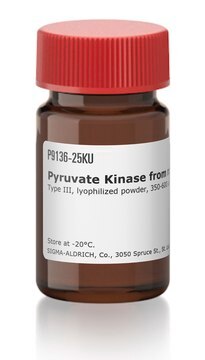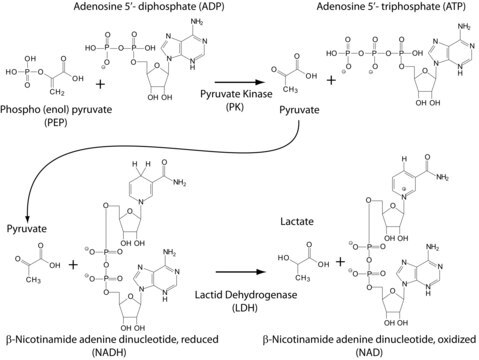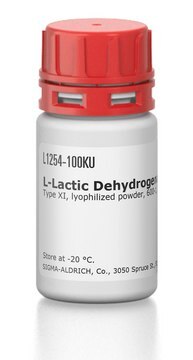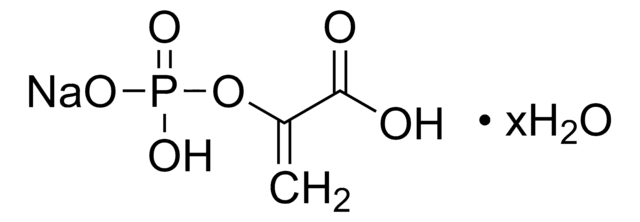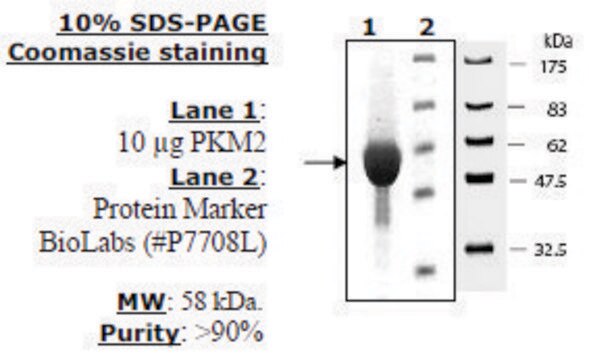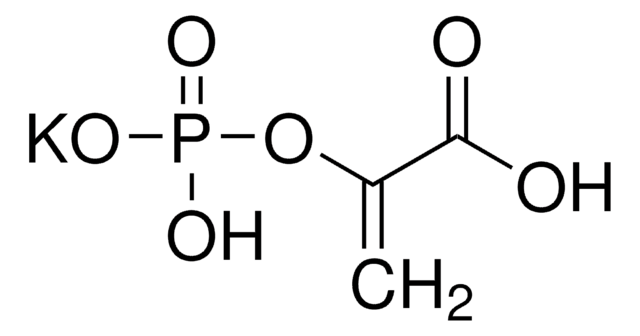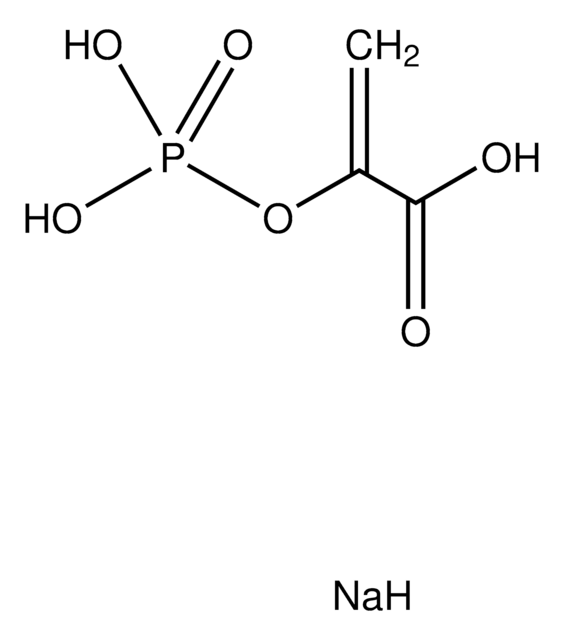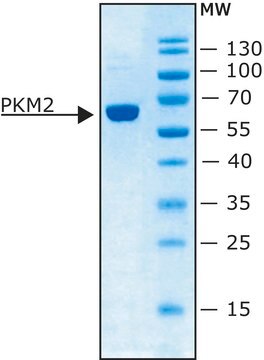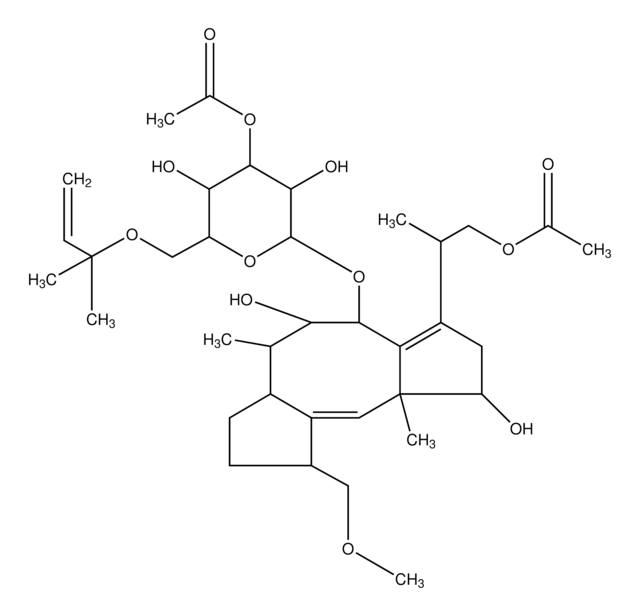P1506
Pyruvat-Kinase aus Kaninchenmuskel
Type II, ammonium sulfate suspension, 350-600 units/mg protein
Synonym(e):
ATP:pyruvate 2-O-phosphotransferase, PK, Phospho-enolpyruvat-Kinase
About This Item
Empfohlene Produkte
Biologische Quelle
rabbit muscle
Qualitätsniveau
Typ
Type II
Form
ammonium sulfate suspension
Spezifische Aktivität
350-600 units/mg protein
Mol-Gew.
237 kDa
Lagerbedingungen
(Tightly closed)
Methode(n)
ligand binding assay: suitable
Farbe
white
Fremdaktivität
lactic dehydrogenase, creatine phosphokinase, and myokinase ≤0.01%
phosphoglucomutase ≤0.05%
Lagertemp.
2-8°C
Suchen Sie nach ähnlichen Produkten? Aufrufen Leitfaden zum Produktvergleich
Allgemeine Beschreibung
Pyruvate kinase from rabbit muscle catalyzes ATP-dependent phosphorylation of glycolate to yield 2-phosphoglycolate.Pyruvate kinase, an enzyme, is found in a tetrameric or a dimeric form. PKM1, PKM2, PKR, and PKL are the four mammalian pyruvate kinase isoforms.
Anwendung
- a structural study to understand the reaction mechanism of the final step in glycolysis.
- a study to investigate ATP-dependent phosphorylation of α-substituted carboxylic acids.
- enzyme assays.
Biochem./physiol. Wirkung
Isoelectric Point: 7.6
Optimal pH: ∼7.5
Optimal Temperature: 25°C
ΕA280 = 0.54 for 1 mg(p)/ml, 1 cm path
Reported KM values are ATP (0.86 mM), pyruvate (10 mM), ADP (0.3 mM), and PEP (0.07 mM) in Tris buffer at pH 7.4 and 30 °C. Pyruvate kinase is highly specific for phosphoenolpyruvate, but can utilize other dinucleotide triphosphates as substrates in place of ATP including GTP, ITP, dATP, UTP, and CTP.
Einheitendefinition
Physikalische Form
Hinweis zur Analyse
Antikörper
Enzym
Substrat
Ähnliches Produkt
Lagerklassenschlüssel
12 - Non Combustible Liquids
WGK
WGK 2
Flammpunkt (°F)
Not applicable
Flammpunkt (°C)
Not applicable
Zulassungslistungen
Zulassungslistungen werden hauptsächlich für chemische Produkte erstellt. Für nicht-chemische Produkte können hier nur begrenzte Angaben gemacht werden. Kein Eintrag bedeutet, dass keine der Komponenten gelistet ist. Es liegt in der Verantwortung des Benutzers, die sichere und legale Verwendung des Produkts zu gewährleisten.
EU REACH Annex XVII (Restriction List)
Analysenzertifikate (COA)
Suchen Sie nach Analysenzertifikate (COA), indem Sie die Lot-/Chargennummer des Produkts eingeben. Lot- und Chargennummern sind auf dem Produktetikett hinter den Wörtern ‘Lot’ oder ‘Batch’ (Lot oder Charge) zu finden.
Besitzen Sie dieses Produkt bereits?
In der Dokumentenbibliothek finden Sie die Dokumentation zu den Produkten, die Sie kürzlich erworben haben.
Kunden haben sich ebenfalls angesehen
Artikel
Instructions for working with enzymes supplied as ammonium sulfate suspensions
Unser Team von Wissenschaftlern verfügt über Erfahrung in allen Forschungsbereichen einschließlich Life Science, Materialwissenschaften, chemischer Synthese, Chromatographie, Analytik und vielen mehr..
Setzen Sie sich mit dem technischen Dienst in Verbindung.